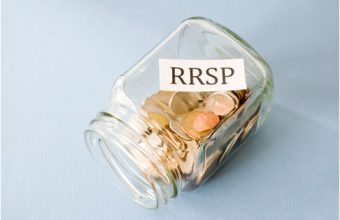Many investors are torn between contributing to an RRSP and putting funds into a TFSA. Is one plan better than the other? In fact, both vehicles are excellent tax shelters, but each serves a different purpose.
Here’s a look at the differences, and how to make them work for you.
With an RRSP, you have to ask two basic questions: What is my marginal tax rate when I contributed to the RRSP? What will be the marginal tax rate when I plan to withdraw the funds from my RRSP?
In most cases, you will be in a lower tax bracket when you retire. But if you expect to be in a similar or even higher tax bracket, then it might make more sense to load up your Tax-Free Savings Account (TFSA) to the maximum levels each year. That’s because in a TFSA, the money will not be taxed when it is withdrawn from the account.
With an RRSP, you get a tax deduction for the year in which you make contributions. Investments inside the RRSP are sheltered from tax until you withdraw the money, at which point they must be taken into income where they are taxable at your marginal rate at the time of withdrawal. At maturity, you can, of course, roll over your RRSP into an annuity (very low rates at present) or another plan, like a Registered Retirement Income Fund, in which you must withdraw a specified minimum amount each year until the fund is depleted. Withdrawals are taxed as income at your marginal rate.
When withdrawing from an RRSP at retirement, you will want to make sure that you keep your income below the Old Age Security income threshold, or your OAS benefit will be ‘clawed back’.
TFSA benefits
Tax-Free Savings Accounts are a bit different. You can contribute up to a maximum $5,500 annually to a TFSA, and there’s no income or means test involved. There’s also no cutoff date ‘ you can contribute any amount at any time you want through the year, as long as you don’t exceed the maximum in a given calendar year. You have to be over 18 and a have a valid Canadian Social Insurance Number.
Any unused contributions can be carried forward and added to the maximum contribution in a future year. Unlike RRSPs, there’s no tax deduction for contributions, but income generated within the plan ‘ whether interest, dividends, or capital gains ‘ is completely tax-free. As with RRSPs, the benefits of the dividend tax credit, the 50% capital gains exemption, and capital losses are lost within a TFSA.
And as with RRSPs, the rules and regulations for TFSAs can get complicated.
Qualified investments are very much like those allowed for RRSPs: cash, stocks listed on designated exchanges, mutual funds and ETFS, bonds, GICs, and certain shares of small business corporations. Shares traded ‘over-the-counter’ on dealer networks or exchanges are not qualified TFSA investments.
‘In kind’ contributions of qualified investments are also allowed (for example, stocks transferred from a non-registered account). But any in-kind transfer will trigger a deemed disposition of the security at its fair market value, which will be considered as the amount of your contribution. If there’s a capital gain, you will have to take 50% of the gain into income for tax purposes. But if there’s a loss on the disposition, you cannot use it to offset other gains.
Contribution traps
In deciding on RRSPs or TFSAs, one of the most common problems people encounter is running afoul of the rules related to withdrawals and contributions.
This frequently happens for those who use their TFSA like a debit card. This usually results in a confusing cycle of contributions and withdrawals in a calendar year, so that you could end up with so-called ‘excess amounts’ in your TFSA ‘ that is, contributions over and above the $5,500 annual limit for the year.
The CRA levies a tax penalty of 1% per month based on the highest excess TFSA amount in your account for each month in which an excess exists. This means that the 1% tax applies for a particular month even if an excess amount was contributed and withdrawn later during the same month. The excess-amount tax kicks in on the first dollar of excess contributions.
Bottom line
Ideally, you should use both types of plans ‘ but for different purposes. Most commonly, an RRSP is used for long-term retirement savings, allowing money to accumulate and compound on a tax-deferred basis inside the plan for 25 or 30 years or longer. TFSAs tend to be used for shorter-term savings goals over five to 10 years or so, such as a down payment on a home, a new car, vacations, and so on. However, TFSAs are also useful for investing funds that are not required for income needs after retirement.
This post was written by Robyn K. Thompson for Golden Girl Finance.
Tagged under: finance,saving,Money,rrsp,TFSA
Category: family-finance






